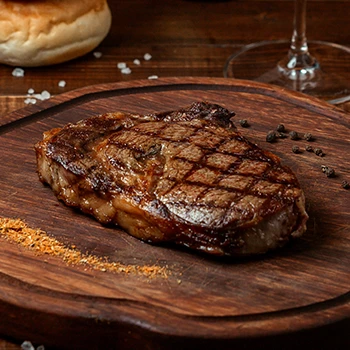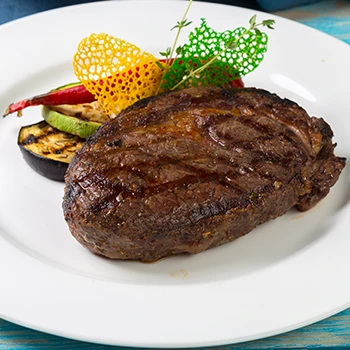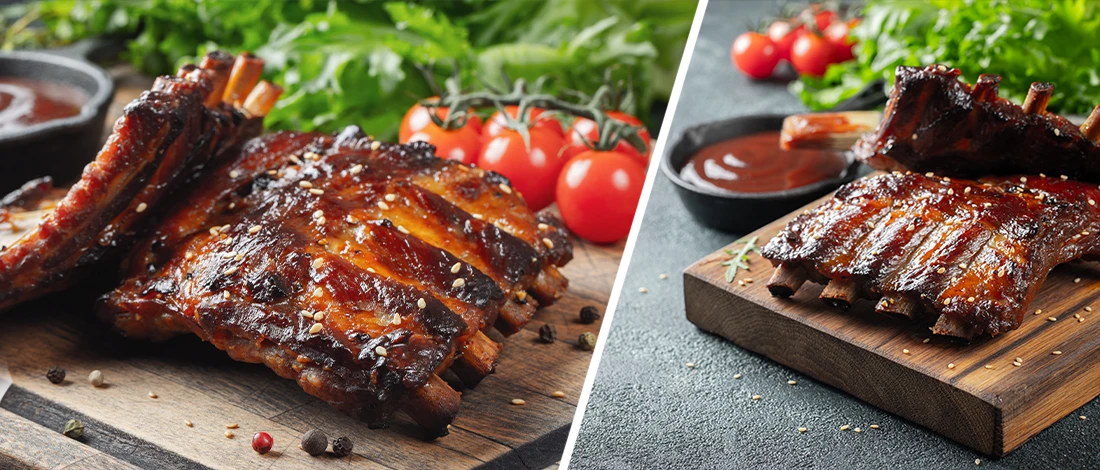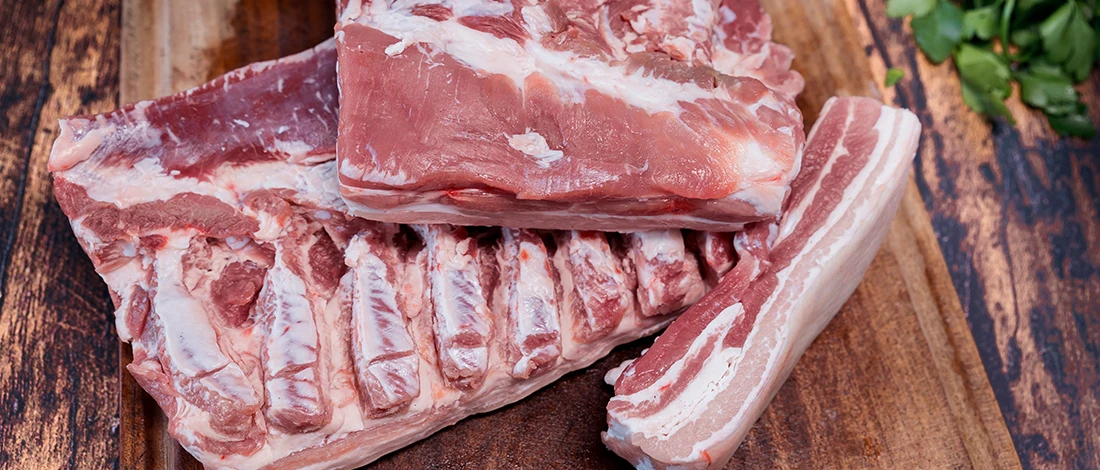Letting the meat rest for a few minutes after cooking produces a perfectly juicy cut. But, the trick is knowing how long to rest the meat.
I’ve grilled countless steaks over the decade I’ve been on a carnivore diet and experimented with different rest times until I finally got the hang of it.
Today, I’ll share my tips and tricks to help you cut your steak at just the right time.
Quick Summary
- The secret to a juicy steak is resting, and resting time depends on the cut.
- You need to wrap the steak in aluminum foil so there’s warm air around the resting steak.
- Eat rested steak immediately once the entire process is done.
How Long Should You Let the Steak Rest?

You should let the steak rest according to its thickness. A general rule is to rest thinner cuts for five to seven minutes and thicker cuts for ten to twenty minutes before cutting into them.
You want to cool the steak, so the center is around 130 degrees Fahrenheit, and the exterior is around 140 degrees Fahrenheit.
Note: Don’t use a probe thermometer to check the steak’s internal temperature because the juices will be expelled through the opening, resulting in lost juices.
Follow this timing method to determine how long to rest steak:
- Rest for 5 minutes per inch of thickness
- Rest for 10 minutes per pound
- Rest for one minute for every 100 grams
- Rest for half the time it took to cook if you have a thin steak
- Rest for the whole time it took to cook if you have a thick steak
If you aren’t sure how to determine the size of your meat, don’t touch the resting steak for at least five minutes. But, if you cooked a whole roast, let it sit for up 20 minutes.
Overall, the general guide is that the bigger the steak, the longer you should let it rest. Wait for the resting meat to come to the perfect internal temperature.
Related Articles:
How to Let Steak Rest?
You let the steak rest by leaving it on a plate or a cutting board. Don’t push or prod, or you risk losing the juices.
Here’s a step-by-step guide on how to rest perfectly cooked steak:
- Remove the steak from the oven or burner.
- Move the meat to cutting boards, a warm plate, or a serving platter.
- Loosely tent the cutting board, a plate, or a serving platter with aluminum foil to trap the heat. Make sure there’s space on all sides for warm air and aromas to move between the cooked steak and the foil.
- Remove the foil after the rest time is over.
- Cut the steak and serve.
“The minute you take the steak out of the pan or off the grill, you have to let it rest. I promise you now, it’s going to be so much juicier.”
- Gordon Ramsay, British Chef & Restaurateur
You should also rest the raw meat before cooking. Let it come to room temperature before cooking if you want a flavorful steak.
Place it on the recommended meat cutting board or a plate, and leave it on the countertop so the internal and room temperatures even out.
This ensures the internal and surface temperatures will be even when you cook steak.
Letting the meat rest before cooking is especially important for steaks such as T-bone, ribeye, Porterhouse, and a big rib roast.
Note: Don’t leave the steak on the countertop for over an hour; you’ll risk food safety and meat developing harmful bacteria.
The Importance of Letting the Steak Rest

It’s important to let steak rest because resting meat allows the juices to reabsorb and redistribute. If you cut the steak too soon, its juices will pool out, and you’ll have a dry cut of meat.
Beef is made up of around 70% water [1]. You want to preserve as much of this moisture as possible when cooking steak.
The longer you cook the meat, the more set the proteins become. As they set, they push the juices toward the center.
If you cut the steak immediately after cooking it, all the moisture pours out, and you lose flavor. You’re left with unappetizing, tough meat.
Resting steaks allows the temperature to come down. The constricted proteins relax, and the juices can redistribute into the center of the steak and the sides and become absorbed by the fibers once again.
FAQs
How Long Should a Steak Rest After Cooking?
How long a steak should rest after cooking depends on the size of the cut. Bigger cuts should rest for 10 to 20 minutes, and thinner ones should rest for 5 to 10 minutes. You should use aluminum foil to make a tent around the resting meat.
Can Steak Rest Too Long?
Yes, a steak can rest too long. Cooked meat shouldn’t be left out for over two hours. It’ll go cold and become unsafe.
Should You Flip Steak Once?
Yes, you should flip the steak once if you’re grilling it. Flip halfway through the process when cooking medium rare. You must flip because the other side isn’t getting direct heat, and you won’t have a perfect steak.
Do You Cover Steak with Foil When Resting?
Yes, you cover steak with foil when resting. Loosely wrap the resting steak with aluminum foil to stay warm.
References:
- https://www.fsis.usda.gov/food-safety/safe-food-handling-and-preparation/







